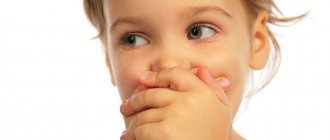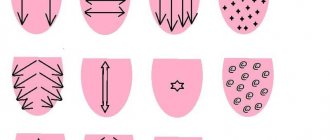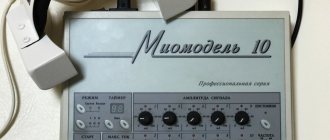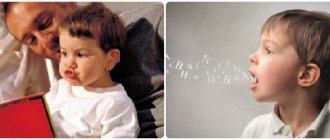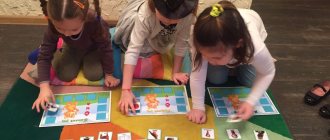General speech underdevelopment (GSD) is a disorder related to the formation of speech in children. This speech underdevelopment affects all aspects of speech: sound, lexico-grammatical and semantic and affects children with a normal level of intelligence and no problems with physical hearing. The manifestation of certain signs of OHP depends on the level of immaturity of the components of the speech system.
OHP is a pathology characterized by unformed sound and semantic speech. With OHP, speech is characterized by the presence of problems in lexico-grammatical and phonetic-phonemic processes, and problems are also observed in the coherence of the child’s speech.
Levels of general speech underdevelopment
A distinctive feature of children with OPD is the late appearance of the first words (by 3-4, and sometimes by 5 years). Speech with OHP is characterized by incorrect sound and grammatical design, it is difficult to understand for others. The speech activity of such children is reduced.
Speech therapy classes for general speech underdevelopment in children are a necessity, since defective speech activity subsequently has a negative impact on memory and attention. OHP can lead a child to difficulties with mental operations, and also negatively affects cognitive activity. Children diagnosed with OHP are characterized by insufficient development of motor coordination, as well as problems with general, fine and speech motor skills. The development of OHP is often associated with:
- intrauterine hypoxia;
- Rhesus conflict;
- birth injuries;
- asphyxia;
- traumatic brain injuries;
- frequent infections;
- chronic diseases.
Inhibition of a child’s speech development can also be caused by factors such as an unfavorable speech environment, lack of attention and communication. Taking into account the degree of OHP, various levels of general speech underdevelopment are distinguished: 1, 2, 3 and 4.
Level 1 OHP is characterized by unformed phrasal speech. Children with this level of speech underdevelopment use “babble” words and one-word sentences in communication, supplementing them with facial expressions and gestures. The vocabulary of such children is very limited and includes, as a rule, individual sounds and onomatopoeia, sometimes a number of simple everyday words. Children with level 1 ODD have a disorder in phonemic hearing, as a result of which it is difficult for the child to understand and complete the task of phonemic analysis of a word.
If a child has level 2 OHP, then, along with babbling and gestures, he uses simple sentences (of 2-3 words) in his speech. It is worth noting that despite this, the statements of a child with this level of speech impairment are poor and uniform in content: as a rule, with the help of these sentences the child designates an object or action. Level 2 OHP is characterized by a significant lag in the child’s vocabulary level (according to his age category) - the child does not know the meaning of many words and replaces them in his speech with words of similar meaning. Phonemic processes are also disrupted: children with this speech disorder are not ready for sound analysis and synthesis.
Level 3 OSD is characterized by extensive phrasal speech, however, children with this speech pathology experience difficulties in constructing complex sentences, so their speech consists mainly of simple speech structures. The vocabulary of children with level 3 OHP is quite extensive: such children use almost everything when communicating parts of speech, however, often use inaccurate names for objects. Phonemic perception is impaired to a lesser extent than in OHP levels 1 and 2.
Level 4 OHP is characterized by difficult sound pronunciation and repetition of complex words. Children with this level of speech underdevelopment tend to make mistakes in word formation and inflection, which is due to a low level of phonemic perception. The vocabulary of such children is quite wide, but it is worth noting that it is difficult for a child with such a speech pathology to understand the meaning of rarely used words. Such children experience particular difficulties when it comes to the need for a logical presentation of events: they often miss the main thing and focus on secondary details. Also, the narration is characterized by repetition of what has been said before.
Overcoming general speech underdevelopment
The first children's medical center - treatment of OCD of any level. Currently, the Center’s specialists have accumulated sufficient experience to successfully correct various speech pathologies.
Correction of OHP by a speech therapist is structured differentially, taking into account the level of speech development. Classes for general speech underdevelopment are aimed at:
- development of speech activity;
- understanding speech;
- work on the formation of the correct phonetic design of the statement;
- development of coherent speech;
- strengthening correct sound pronunciation;
- development of grapho-motor skills.
The list of speech therapy services at the First Children's Medical Center includes:
- consultation with a speech therapist;
- speech therapy massage;
- individual speech therapy sessions.
You can find out the cost of services in the “Price List” section.
Prevention of OHP
Corrective work to overcome ODD is a very long and labor-intensive process that should begin as early as possible (from three to four years of age).
Prevention of general speech underdevelopment in children is similar to the prevention of those clinical syndromes in which it occurs (alalia, dyslalia, bradyllalia, dysarthria, etc.). It is worth noting that parents should pay due attention to the speech environment in which the child is raised. In addition, you need to monitor the development of the baby’s speech activity and, if any problems arise, seek the advice of a specialist as soon as possible.
By contacting our Center, you will receive qualified help from a speech therapist who will pay special attention to your child and give answers to all your questions. We are happy to help you! First Children's Medical Center: Children's health - parents' peace of mind!
Share on social networks:
To make an appointment with a doctor
Choose a doctor
Reasons for the development of type 3 OHP
There are 2 groups of factors that can provoke general underdevelopment of level III speech. These include biological and social.
Biological factors can have an impact on the baby at different periods of its development - from prenatal to 3-4 years. These include moderate lesions of the central nervous system, as a result of which auditory perception and speech motor skills are impaired. Such damage to the central nervous system can be caused by a woman’s bad habits during pregnancy, severe toxicosis, traumatic birth, encephalopathy in a newborn, and traumatic brain injuries. Such children may suffer from dysarthria, aphasia, stuttering, alalia, rhinolalia (if there is a cleft palate).
Social factors are, first of all, the baby’s immediate environment. If there is an unfavorable atmosphere in the family, frequent conflicts, parents do not pay attention to the child or, on the contrary, are too demanding or anxious, do not talk to the baby or lisp (they speak “childishly”, in diminutive forms) - all this makes it difficult to master speech skills. Another provoking factor is bilingualism in the family. Bilingual children are often diagnosed with grade 3 ODD.
Comprehensive diagnosis of the disease
The examination involves a pediatrician, neurologist, otolaryngologist, speech pathologist, and psychiatrist.
The pediatrician assesses the general health of the little patient and provides referrals for consultations with specialized specialists.
The otolaryngologist evaluates hearing acuity and excludes deafness.
A psychiatrist assesses the mental health of a small patient and excludes diseases according to his profile, which may also be accompanied by impaired speech development. This includes, for example, autism.
But the leading role is assigned to the neurologist and speech therapist. It is these specialists who diagnose the disease, assess its severity, identify the cause and develop a treatment regimen.
A neurologist assesses the patient’s neurological status, prescribes hardware diagnostics (for example, MRI of the brain), determines the cause of speech disorders and makes recommendations to a speech therapist. For type 1 OHP, the neurologist usually prescribes drug therapy, physiotherapy, and massage.
Speech therapy correction
A speech pathologist-defectologist determines the child’s speech status. First, he collects an anamnesis - from the opinions of other specialists and information provided by the parents. He asks the parents how the pregnancy proceeded, when the baby began to show speech activity (for example, began to coo), when he said the first word, how much he generally strives to communicate - all this is very important.
Then the speech therapist studies the child’s speech apparatus and examines the components of the language: features of sound pronunciation, the little patient’s ability to compose a meaningful, coherent and literate text, and the volume of vocabulary.
Based on the data obtained, the specialist makes a final diagnosis: the form and degree of speech development disorder, and also prescribes a correction program.
Since in group 1 OHP all parts of the language system are severely underdeveloped, the child does not speak common speech, a speech therapist teaches him to understand speech addressed to him, increases speech activity, and activates speech imitation.
Additionally, the small patient is prescribed speech therapy massage (normalizes speech muscles to make it easier for him to pronounce sounds), microcurrent treatment (activates the speech centers of the brain) and drug therapy. All these procedures are prescribed by a neurologist.
The correction of grade 1 OHP is approached in a comprehensive manner. It is impossible to achieve results on your own at home, so the child must systematically study with a speech therapist-defectologist. Exercising at home with your parents is also important - a specialist will give you a set of exercises. All exercises are performed in the form of a game. As a rule, children with grade 1 ODD are trained individually, although sometimes classes are conducted in groups of 2–3 people.
Only this approach will help the child move to a higher level of speech development and master new skills.
Complications of type 1 OHP
Neurologists and speech therapists say that up to the age of 3, children can speak the way they want and the way they can. Each baby has its own pace of development, so your son or daughter may not “fit” into the age range. But if a child is 3 years old and has only said his first word, this may already indicate a delay in speech development.
If, at the age of 5, he speaks at the level of a two-year-old (slowly, not in sentences, incoherently), his speech is illiterate and incomprehensible, then it is worth urgently showing him to a neurologist or speech therapist. Even if your child understands speech addressed to him and fulfills requests, do not expect him to speak out on his own. You can only waste time. Namely, it plays a decisive role in the correction of the first level of OHP.
If you ignore the problem, it will progress quickly. And this goes beyond just speech: against the backdrop of worsening speech underdevelopment, the baby’s mental development is also disrupted. He cannot think productively, does not remember well, his physical development, coordination of movements, and fine motor skills suffer.
Further - worse. Personal changes also occur: the child becomes withdrawn, does not want to communicate with peers and parents, becomes indifferent to everything, self-esteem decreases, and behavioral disorders begin.
Children with speech underdevelopment cannot master the curriculum of a regular school, so they are sent to special schools.
As a result, mental retardation is formed against the background of a general speech disorder.
Prognosis and prevention of disorders
The prognosis depends on various factors - the cause and form of the disorder, the timeliness of the correction started, and the regularity of classes. Such children have fully intact compensatory capabilities, so they quickly respond to corrective measures. The earlier treatment begins, the better results can be achieved. If the child is 3 years old, this is the best time to start correction - by the age of 5 - 7 years, you can bring his speech closer to normal or completely eliminate the problem. If you ignore the disease, it will only progress.
No one is immune from speech pathologies. Therefore, for the purpose of prevention, it is better to show a child aged 2.5 to 3 years to a speech therapist. The specialist will assess the speech status of the little patient. And if it reveals a discrepancy with age standards, it will immediately begin correction.
Family also plays a huge role. A friendly atmosphere in the home and a warm attitude are the foundations for the normal development of any child. Parents should engage with their daughter or son: talk to him, tell him, explain, play, communicate, engage him in dialogue - all this activates speech activity.
Where and how to treat dysarthria in a child
So, now it is clear that this is dysarthria in children, what symptoms accompany the disease. All that remains is to take the next step - find specialists who will make the correct diagnosis and prescribe competent treatment. If you plan to undergo treatment in Moscow, a good choice is to contact the NeuroSpectrum Center for Pediatric Speech Neurology and Rehabilitation. We use only modern methods in the treatment of children with delays in psycho-speech and speech development: the extensive experience of the Center’s specialists and the latest diagnostic equipment allow us in most cases to predict the best outcome of treatment.
An important point: parents who make an appointment with specialists at our Center, in addition to the consultation itself, can receive free links to useful literature that will allow them to more accurately assess their child’s speech development.
How is dysarthria diagnosed and treated?
Before starting treatment, it is necessary to identify the problem. Examination of children with dysarthria is aimed at classifying the defect taking into account symptomatology, severity of the disease, and localization of the lesion.
In neurological practice, the most common topical classification of dysarthria, according to which the following forms are distinguished:
- Subcortical (extrapyramidal) dysarthria. Develops due to damage to the subcortical nerve nodes.
- Pseudobulbar dysarthria in children. The most common diagnosis. This form can be spastic and paretic.
- Cerebellar dysarthria. Develops when the cerebellum is damaged; it practically does not occur in children.
- Bulbar dysarthria in children. Occurs when the ganglia of the cranial nerves, which are concentrated in the medulla oblongata, are damaged. It is quite rare.
- Cortical dysarthria. Not recognized by all researchers in children, it develops due to focal changes in the motor cortical areas.
In addition to the form, during diagnosis, specialists determine the severity of symptoms - the degree of dysarthria in children. The mildest form is considered to be erased speech dysarthria in children; it is characterized by imprecise articulatory movements, mild disorders of phonetics and auditory perception. Moderate lesions are characterized by multiple and pronounced defects in sound pronunciation, a quiet nasal voice, and incomprehensible speech. Finally, the most severe form is anarthria, which is characterized by slurred speech or its complete absence.
The examination of a small patient, in addition to consultation with a specialist and special speech therapy tests, includes MRI, EEG, electromyography, transchannel magnetic stimulation, and electroneurography.


